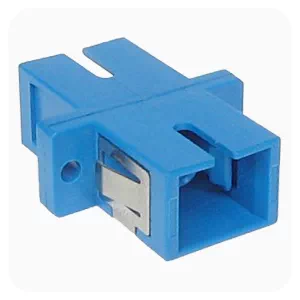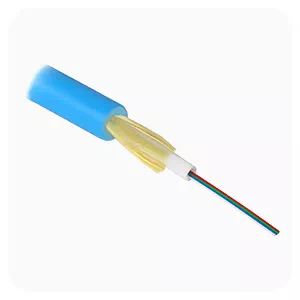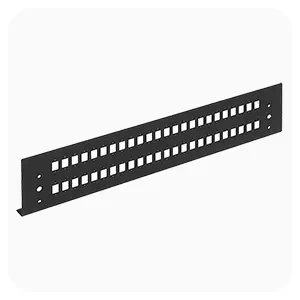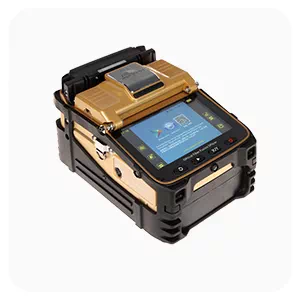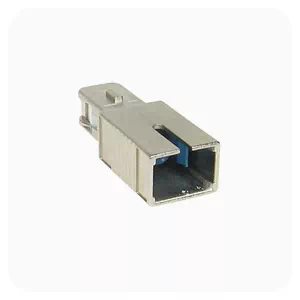Fiber Optics
Dahua, Delta, Extralink, HIKVISION, KONTAKT Simon, LANBERG, MACLEAN, NTT AT, OPTON, Spacetronik, TriBrer, ULTIMODE, UNITEK
Sort by
Page:
of 1
Page:
of 1
What are fiber optics?
Fiber optics is an advanced data transmission technology that uses glass or plastic fibers to transmit information using pulses of light. The principle of operation is based on the refraction of light inside thin fibers, which enables efficient and fast transmission of data over long distances.
Fiber optics allow large amounts of data to be carried at unprecedented speeds. They are not susceptible to electromagnetic interference, which makes them more reliable than traditional copper cables. What's more, fiber optics are used in telecommunications, the medical industry, the energy industry, and as the primary means of transmitting Internet signals. The light signal maintains its quality over considerable distances.
Fiber optics are therefore a key component of modern communication systems, greatly improving the efficiency and reliability of data transmission.
How do fiber optics work?
Fiber optics work by refracting and reflecting light inside thin glass or plastic fibers. This process allows information to be transmitted in the form of light pulses.
How do fiber optics work?
- Step 1: Emitting light. Light is emitted at one end of an optical fiber in the form of pulses, usually in the form of a laser or LED light source.
- Step 2: The light, which enters the fiber at a certain angle, undergoes refraction, or bending, as it passes from one medium to another, such as from glass to air.
- Step 3: Internal reflection. With the right fiber design and angle of incidence, light is reflected inside the fiber without going outside. This phenomenon is called total internal reflection.
- Step 4: Light propagation. The light, after internal reflection, travels along the fiber, propagating over considerable distances.
- Step 5: Light detection. At the other end of the fiber is a detector that reads the light pulses and converts them back into data.
What are the advantages of fiber optics operation?
Fiber optics are very popular because of the numerous advantages of their operation. Noteworthy among them is the fact that fiber optics make it possible to transmit large amounts of data at very high speeds.
Moreover, they are not susceptible to electromagnetic interference, which makes them more reliable than traditional copper cables.
The operation of fiber optics is based on long distances - the light signal maintains its quality over considerable distances. As a result, fiber optics are a key component of modern communication systems, and their operation is based on physical phenomena such as refraction and reflection of light.
Why are fiber optics so popular?
Fiber optics are hugely popular because of the range of advantages they offer over traditional means of data transmission, such as copper wires.
Fiber optics allow large amounts of data to be transmitted at very high speeds. This makes them ideal for broadband services such as high-speed Internet and high-definition television.
Fiber optics are characterized by high resistance to interference. In copper cables, electrical signals can be disturbed by electromagnetic fields. Fiber optics are indifferent to such interference, making them more reliable. The light signal maintains its quality over long distances without significant signal loss, making fiber optics effective over long distances.
Fiber optics are also extremely lightweight and flexible, making them easy to install. They can be easily routed through hard-to-reach areas. Unlike copper wires, fiber optics do not conduct electricity. They are also immune to electromagnetic interference, making them safe for use.
The popularity of fiber optics is also due to space savings. Fiber optics are much thinner than copper wires, which means that much more data can be transmitted using less space.
Fiber optics are also extremely resistant to weather, corrosion, and mechanical damage, making them durable and reliable in a variety of environments. Since fiber optics do not conduct electricity, it is safer to use them when working near power lines.
All these factors make fiber optics a popular and preferred means of data transmission in today's world. Check out IVEL's offer and choose the fiber optics and fiber optic accessories perfect for you.
Brands zone
Our recommendations
- City monitoring
- Home monitoring
- Estate monitoring
- Shop monitoring
- Pharmacy monitoring
- Parking monitoring
- Office monitoring
- School monitoring
- Warehouse monitoring
- Gas station monitoring
- Hard drive capacity calculator
- Lens focal length calculator
- Comprehensive expert support
- Efficient order processing
- Competitive prices, promotions, and discounts
- We care about consumer rights


